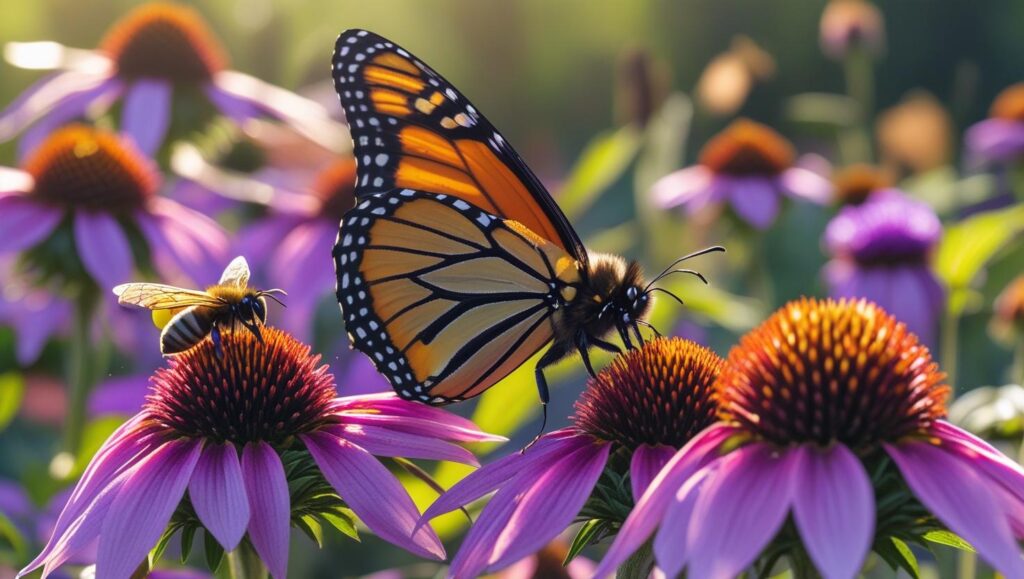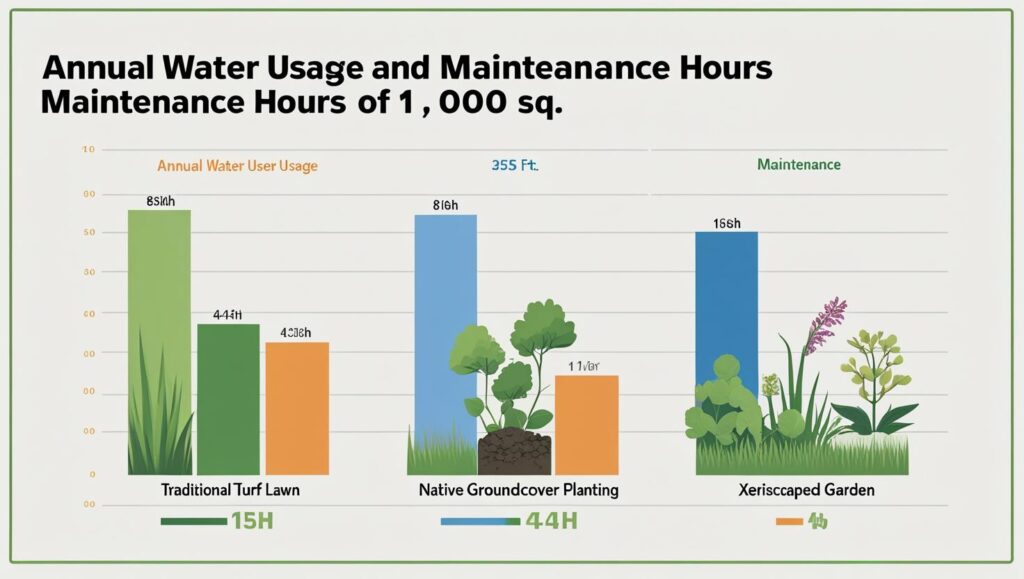Homeowners are increasingly replacing conventional turf with dynamic, sustainable green spaces. This shift is driven by a desire for greater environmental responsibility, enhanced curb appeal, and more personal, functional outdoor areas. From edible landscapes to pollinator havens, these creative front yard garden ideas are reshaping neighborhoods and redefining the modern home garden.

The Modern Front Yard
| Key Trend | Core Benefit | Supporting Data/Expert Insight |
| Sustainable Landscaping | Reduces water consumption and maintenance, supports local ecosystems. | Replacing a 200-sq-ft lawn can conserve thousands of gallons of water annually. (Resource Central) |
| Focus on Native Plants | Thrives in local conditions, provides habitat for pollinators and wildlife. | “Native plants are pre-adapted to local conditions and naturally support native bees and other beneficial species.” (Michigan State University Extension) |
| Edible Gardens | Provides fresh produce, reduces food miles, and fosters community connection. | Home gardeners often use less than half the water required for agricultural production of the same crops. (University of Florida IFAS Extension) |
A quiet revolution is taking root in residential landscapes across the country. Homeowners, increasingly conscious of environmental impacts and seeking more personalized living spaces, are trading manicured grass lawns for innovative and sustainable designs. This movement towards creative front yard garden ideas reflects a significant shift in how people view the space just outside their front door—seeing it not as a static green carpet, but as a dynamic ecosystem that can offer beauty, food, and ecological benefits.
Experts report a surge in demand for landscapes that are both aesthetically pleasing and environmentally sound. According to a trends survey from the American Society of Landscape Architects (ASLA), elements like native plants, rainwater harvesting, and reduced lawn areas consistently rank among the most requested features by homeowners. This signals a move away from high-maintenance, resource-intensive lawns toward gardens that work with, not against, the local environment.
1. The Pollinator-Friendly Oasis
A garden that buzzes with life is a top priority for many. Creating a pollinator station involves more than just planting flowers; it’s about building a supportive habitat.
“These consist of a variety of bird baths, hummingbird and squirrel feeder stations, and native plants surrounding these feeder stations,” explains Tammy Sons, a horticulturist at TN Nursery, in a 2025 trends report by The Spruce.
To implement this, homeowners can select a variety of native plants with different bloom times to provide a continuous food source for bees, butterflies, and other beneficial insects. Experts from the Michigan State University Extension emphasize that native plants are crucial as they are “pre-adapted to local conditions and naturally support native bees.”

2. Edible Landscapes: A Feast for the Eyes and Table
The concept of “foodscaping,” or integrating edible plants into ornamental landscapes, has gained significant traction. This approach enhances food security and reduces reliance on long-distance food supply chains.
Experts at the University of Florida’s Institute of Food and Agricultural Sciences note that edible landscapes can provide “additional health, aesthetic, and economic benefits.” Homeowners can incorporate everything from berry bushes and fruit trees as structural elements to artfully arranged beds of herbs and lettuces as groundcover.
3. Xeriscaping and Water-Wise Designs
In response to widespread drought conditions and a growing desire for water conservation, xeriscaping has become a leading trend in sustainable landscaping. This method focuses on creating a garden that requires minimal to no supplemental irrigation.
“The goal is to train your plants to seek out water deep in the soil, making them more drought-tolerant over time,” states an expert from Colorado State University Extension. Key principles include using drought-tolerant native plants, limiting turf areas, and applying mulch to retain soil moisture. Contrary to popular belief, a xeriscaped garden can be lush and colorful, utilizing plants like agave, lavender, and ornamental grasses.
4. The Naturalistic “Meadowscape”
Moving away from rigid, formal designs, many are embracing a softer, more natural aesthetic. A front yard meadow, or “meadowscape,” uses layers of grasses and perennials of varying heights and textures to create a wild, yet intentional, look.
“Homeowners are increasingly wanting more natural but more colorful gardens with flowers that bloom throughout the year,” says Laura Janney, owner of The Inspired Garden. She advises placing flowers in a zigzag pattern rather than straight rows to achieve a more organic feel.
5. Rethinking Groundcover: Beyond Grass
Replacing a thirsty lawn doesn’t have to mean forgoing a green carpet altogether. A variety of low-growing, walkable groundcovers offer beautiful, low-maintenance alternatives. Options like creeping thyme, clover, or native sedges require less water, little to no mowing, and can handle light foot traffic, all while improving soil health.

6. Vertical Gardens for Small Spaces
For those with limited square footage, vertical gardens offer an elegant solution. Using trellises, wall-mounted planters, or freestanding structures, homeowners can grow herbs, flowers, and even some vegetables upwards. This technique not only maximizes growing space but also adds architectural interest and privacy to the front of a home.
7. Structured Elegance with Raised Beds
Raised garden beds bring a clean, organized look to the front yard. They provide excellent drainage, prevent soil compaction, and can be filled with high-quality soil tailored to specific plants. For edible gardens, they make planting and harvesting easier. Using materials like corten steel, stone, or cedar for the beds can add a modern and sophisticated design element.
8. The Modern Rock Garden
A contemporary take on a classic, the modern rock garden combines carefully selected stones and gravel with drought-tolerant succulents, alpines, and ornamental grasses. This is not the sparse rock garden of the past; today’s designs use texture, color, and form to create a visually stunning and extremely low-maintenance landscape that doubles as a piece of natural art.
9. Rain Gardens for Stormwater Management
Function meets beauty in a rain garden, one of the most practical front yard garden ideas. These are shallow depressions planted with deep-rooted native plants designed to capture and filter rainwater runoff from roofs and driveways. According to the ASLA, rain gardens are a popular sustainable feature that helps recharge groundwater, prevent erosion, and filter pollutants, all while providing a beautiful garden feature.
As environmental awareness continues to grow, the suburban front yard is poised to become a key area for personal ecological stewardship. This trend toward thoughtful, creative gardening offers a path for homeowners to not only enhance their property’s curb appeal but also contribute positively to the health of their local ecosystem.
The Gardener’s Guide: How to Cut Basil Leaves from a Plant for a Bushier, More Productive Harvest
